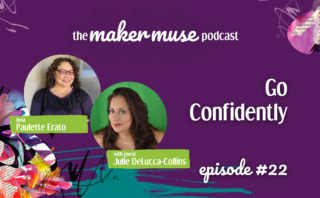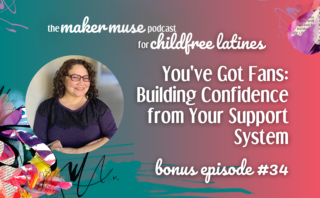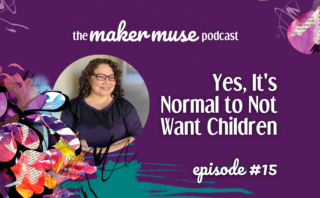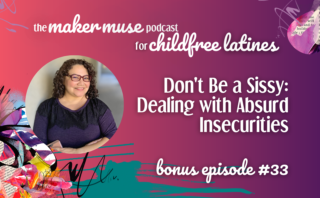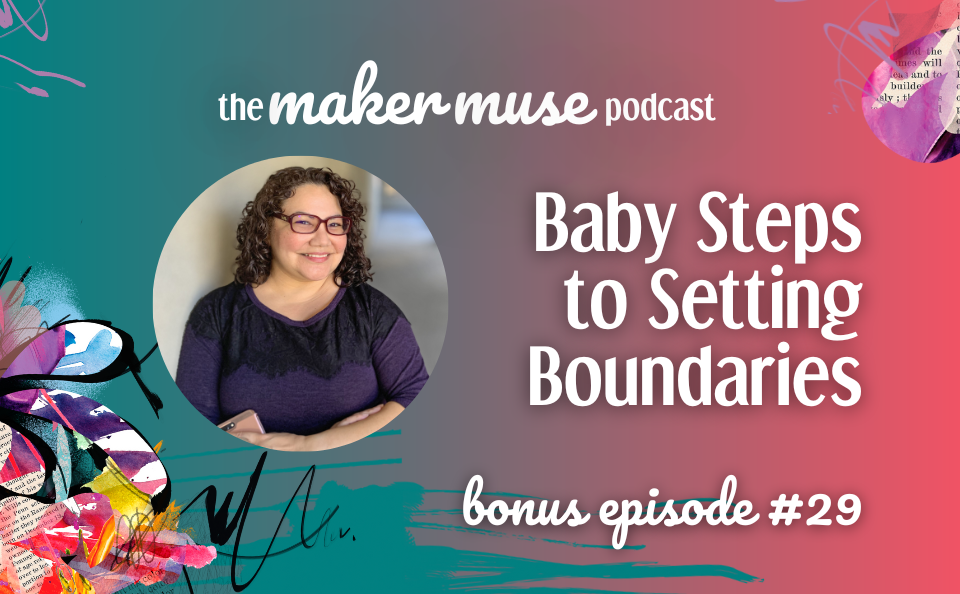
Boundaries are a good thing to have but all to often it feels like an overwhelming task to create and then enforce them against other people. Because being assertive or even confrontational can be hard!
So here are some examples of how to set boundaries for yourself that don’t require anyone else to agree to them. Intra-personal boundaries, the kind that are just for you, are a good starting step for eventually setting inter-personal boundaries (the kind you use to deal with the annoying coworker or overbearing relatives).
- No phones in the bedroom
- Eat your meals at the table
- Have a bedtime
- Turn off social media
- Listen to your body
DM me on Instagram if you have questions about this week’s episode. And if you would like to apply to be on the podcast, fill out this form. And join the mailing list to learn about what’s coming in the future.
This post may contain affiliate links. For more information, please see my Disclosure Policy.*
Socialize online
Subscribe to the mailing list and follow The Maker Muse on:
Transcript
[00:00] Paulette: Buen día y welcome to the Maker Muse Podcast, the place where child free Spanglish speaking, mujeres fuertes are inspired to find their confidence, su confianza, through creativity. I’m Paulette Erato, the Maker Muse.
[00:18] Hey, mi amigue. I’m still in a hiatus between seasons two and three, but I had my Instagram followers vote on the topic for the next mini episode. And here we are. It’s baby steps to setting your boundaries.
[00:29] And let me tell you, if you wanna join in on deciding what future topics this podcast will cover, follow me on Instagram. The link is always in the show notes. And yeah, so I’m sorry if I sound a little gravelly in this episode. It was a training recorded in my now defunct Facebook group, but I think I might be bringing something like that back in the future.
[00:48] So stay tuned and you know, get on the mailing list, which is also in the show notes. Okay, let’s jump in.
[00:56] Good morning mis amigues. I invited you all to this event to talk about, uh, the baby steps to creating boundaries. Because boundaries are often seen as something that you need to do to put limits around you and other people.
[01:10] And I wanna show you a way to think differently about boundaries that might be a little easier to digest because, you know, being, uh, assertive and confrontational. Can make you feel kind of icky, right? Like if you have to put up boundaries at work or interpersonal boundaries with another person, that can give you a lot of anxiety.
[01:30] So let’s take some baby steps to setting boundaries that don’t require cooperation from other people, and then maybe you will be comfortable with that, and then you’ll be able to move down and progress down the line to setting boundaries with people who bother you or whatever. Whatever those boundaries need to look like.
[01:50] I’ll tell you right now, I have a boundary with a family member. It’s one of the icky boundaries, like the hard boundaries. And it took years, years to get comfortable doing it. So I know it’s hard and it’s still hard, it’s still hard. Um, but it was worth it because I am a much happier individual now, especially when that individual is around than before I set the boundary.
[02:13] So I get it, and I know how anxiety inducing they can be. So what kind of boundaries don’t require the cooperation or buy in from other people? The ones you set for you. Cause what we’re talking about is just protecting your own mental health, your own wellbeing. When we talk wellbeing, it’s mental, emotional, physical, spiritual health.
[02:33] So it’s kind of like the all encompassing facets of you. And if you’re just doing things for you, you don’t need anyone else’s buy-in. And so I’m gonna give you a few examples and these might feel like stuff you’re already doing and you’ll recognize that they kind of look like good habits. So one of the way you sh ways you show up for yourself and therefore conquer imposter syndrome is by setting boundaries, committing to yourself and doing the things that you promise yourself you will do for you.
[03:06] This is just building on that concept because the mo, more you show up for you, the less that imposter syndrome can attack you. And the more you prove to your brain that you’re capable of doing this thing, which is showing up for yourself, encouraging your boundaries, setting them, enforcing them, making promises to yourself, and then doing them.
[03:25] Your brain starts to believe you will show up in the big ways when you have to. Like when you have to create that boundary between you and maybe a nosy coworker, annoying coworker, we’ve all had them. It knows you can. You will have the confidence that you can do that. So what are some ways to set boundaries for you?
[03:47] These are just example. One of your boundaries can be that you no longer take your phone into the bedroom with you at night. Like you don’t use it as an alarm clock, you don’t use it, you don’t read it while you’re trying to go to sleep, cuz you know the blue light can mess with your brainwaves. And so the phone, there’s no electronics in the bedroom.
[04:04] That could be a boundary for you. It could lead to better sleep. It could lead to less, less reliance on this device to help put you to sleep. That’s just an ex. These are just suggestions. I’m not telling you you have to do this. Another boundary could be that you eat your meals at a table. You don’t eat at your desk, you don’t eat on the sofa watching tv.
[04:28] You sit up and enjoy the meal in front of you at a table. Or you know, you go to the park and you sit at a bench so that you, you take the time to enjoy your meals, to enjoy a break. That could help you try, start trying to get your time back from the attention you give to all the other things that are required of you in your life.
[04:52] I recently started doing this one because it’s very easy to sit and eat on the couch. This was actually not necessarily a bad habit for us for years because the dining room table was my workspace. You know, that’s where I wrote my blogs. That’s where I did my sewing. We had a very small place, so I didn’t have, we didn’t have anywhere else to eat except on the couch. And then it just became a bad habit after we moved and we did have space.
[05:19] Making the conscious decision to sit at the table versus in front of the television also helped remove the idea that if I was sitting on the couch, I needed something in my mouth. So it kind of helped with my snacking habits as well. So I’m a big fan of making sure I eat at the table because that’s the place in our house that has been deemed the place we eat at.
[05:39] Do we break that rule? Yes. Yes. Especially like Friday nights, if we’re not going out to eat, uh, if we’re staying in and watching a movie, you know, it’s not a hard and fast rule. It’s just a boundary most of the time. And yes, I have a partner, so that required his buy-in, but we don’t necessarily eat all of our meals together.
[05:56] And so when I’m, if you live alone or if you don’t live alone, you, you can set that boundary for you. So another one is to have a bedtime. You know, sometimes we think that adulting means we can stay up whenever we want, and for the first few years, yes, that is what adulting is. You can stay up however late you fucking want.
[06:13] This works even for night owls because for those of you who get your creativity after eight o’clock, after nine o’clock, you know, maybe your bedtime needs to be two o’clock. Maybe you say at two o’clock, that’s when I stop and I start my wind down process. So this can work whether your bedtime is 9;30 like me , or 2;30, like some night owls.
[06:34] But what you do is you set the boundary on how much time you’re going to give your, your creative outlets, your flow, and put an end limit on it. That’s all it is. It’s, and you get to choose what that is. You get to choose how deep into the night or day your limit is and just then say, okay, I’m done. Now it’s time to rest because rest is required.
[07:00] You hear me say this all the time. Rest is required. It is one of the three most important things that the human body needs. The other two are air and food and water. Food and water in the same category. You need to feed your body. You need to be able to breathe and you need rest. So make a boundary after when you will give your body rest.
[07:22] This is another favorite of mine. Turn social media off. I know that sounds like ridiculous to some people, and it did to me too, but a friend of mine said that she did not check Facebook on the weekends. She actually removed it from her phone and I thought, okay, I’ll try that. And it was, I, I couldn’t do that.
[07:40] But what I did do is I bifurcated my social media profiles. I have a profile and that’s tied to everything to do with the podcast and business relations. All the groups and all of the business development groups and things like that, that I am attached to are under this profile. And then I have a personal profile where I post all the shit like, you know, memes about FBI raids and that’s mostly family and friends, but the meme profile, that’s where I play on the weekends or after hours.
[08:11] So that was my way of limiting the time around personal development hours and just fun time on social media cuz social media can still be fun. It doesn’t have to be toxic. So that’s also when I check in on my other Instagram profile and remember that, oh, maybe I should post something about sewing. I keep forgetting to do that.
[08:32] So draw lines and limits around your social media that work for you. Are two profiles allowed on Facebook? They don’t seem to have done anything to punish me for that. They let me sign into both of them from my phone in the same app. I figure it’s fine.
[08:51] The last one I’m going to give you as an example is to rest when you’re tired and eat when you’re hungry.
[08:58] Two of the three major things that your body needs. What that means is listen to your body. Listen to your body when it’s telling you it’s tired, now’s time for a break. Listen to your body when you need a biological break, like you have to go pee or poop, don’t hold it. Listen to your body when it says I need food.
[09:19] And those, depending on how long you’ve spent grinding and potentially burning out, you may have completely ignored some of these signals in your body and gotten used to ignoring it. So this might be something you have to practice. For me, it’s the eating one. I forget to eat sometimes, and people are like, how do you forget to eat?
[09:40] I ignore the cues that my body is giving me that it wants food. I do. So I’ve had to, you know, be more conscious of that. So if this one is one that hits with you, spend today trying to recognize if your body’s telling you something. Your body will tell you a lot if you will listen. But we spend so much time up in our brains, in our like practical, logical thinking that we forget that sensations in our body also mean something.
[10:10] They mean something. I hurt my hip the other day, and I mean like so painful that it woke me up at three in the morning and I had to take a painkiller for the pain. I hate taking painkillers. I just, I hate it, but pain is a signal that something is very wrong. So now I’m waiting for my doctor to get me in for an MRI.
[10:31] In the meantime, no lifting, no dancing, no walking. I’m basically like a lump on a stump. And that’s annoying because I’m also in pain, but that’s, that’s my body telling, giving me a signal that like, oh, maybe I need to stop what I have been doing and not do that anymore. I know what the problem is. I, I leg pressed too hard on a machine that I was not comfortable on, so I’ve had to take a week off from the gym, which I hate.
[11:01] I hate more than having to take painkillers. The gym is my happy place. The gym is where I go to relax, but I injured myself, so I’m not gonna push through the pain. Pushing through the pain is what causes further damage. I’m too old to damage my body like that. It needs rest. So my body threw up a boundary for me this week that didn’t require anyone else’s buy-in except me.
[11:26] All right, so to recap, baby steps to creating boundaries would include things that are limits for you and you alone. They actually create a sense of freedom because sometimes we need parameters to be able to do all the things we want to do and still feel good about ourselves. So think of these parameters, these limits, these boundaries as freedom for you to then know what your limit is.
[11:51] And once you reach your limit, you stop. They don’t require outside cooperation, it’s intrapersonal versus interpersonal, you and another person. It’s just you. And once you can create limits like these, create boundaries like these for yourself, creating boundaries with other people, outside of yourself, will become a little less scary.
[12:14] And we can move on to part two of creating boundaries with other people, low risk boundaries. If you want, you let me know. And with that my friends, I’m gonna remind you to stay hydrated and that’s a burrito.
[12:29] Wanna talk about this week’s episode? Feel free to DM me on Instagram. My info is always in the show notes.
[12:35] And if you’re looking to be a guest in the future for the the Maker Muse Podcast, check out the guest form on my website at themakermuse.co. Yes, themakermuse.co. It’s also linked in the show notes.
[12:47] And hey, muchisimas gracias for listening to another episode of the Maker Muse Podcast. Are you subscribed? If not now would be a great time to do that.
[12:56] New episodes come out every Tuesday. I’m on Apple, on Spotify, wherever you listen. And then can I ask you a favor? Could you please tell all of your friends and family about? ¿Sus amigues, su familia? Because if you love it, they probably will too. And I’d really appreciate it if you could rate and review it wherever you’re listening right now.
[13:16] ¡Hasta la proxima!

